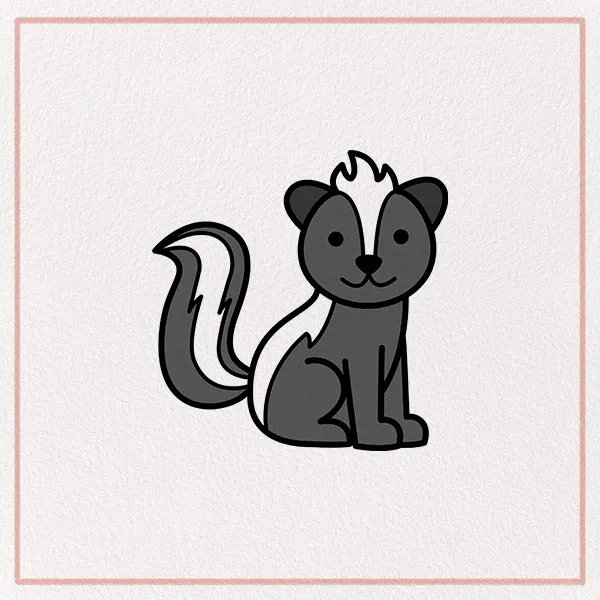Bobcats are fascinating wild cats known for their tufted ears and short, bobbed tails. These medium-sized felines are native to North America and are well known for their stealthy hunting skills. Did you know that bobcats are excellent climbers and can leap up to 10 feet high? They can also run up to 30 miles per hour when chasing their prey! In this tutorial, we will guide you step by step on how to draw a bobcat with ease. Grab your pencil, find a comfy spot, and let’s get started on this exciting artistic adventure!
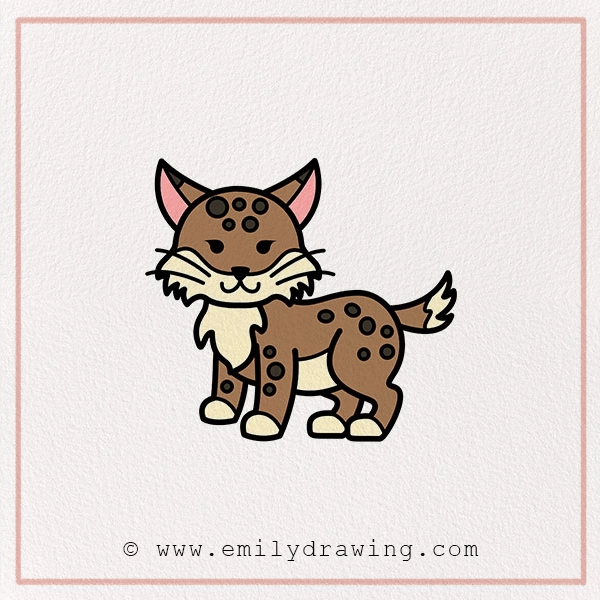
Materials:
- a piece of paper
- a pencil for the guiding lines and sketching
- an eraser
- a black sharpie or a pen for the outlines
- markers or colored pencils for coloring
- our printable drawing guide (Join my Email List below to get this Tutorial)
Here are my RECOMMENDED Art Supplies!
- Crayola Coloring Set (140 Pieces – Mega Value!)
- 24 Colored Crayon Set
- A4 Printer Paper
- Crayola Coloring Pencils
- HP Home Printer with Instant Ink!
Time needed:
15 minutes.
How to Draw a Bobcat — Let’s get started!
Step 1 – Draw the Bobcat’s Head
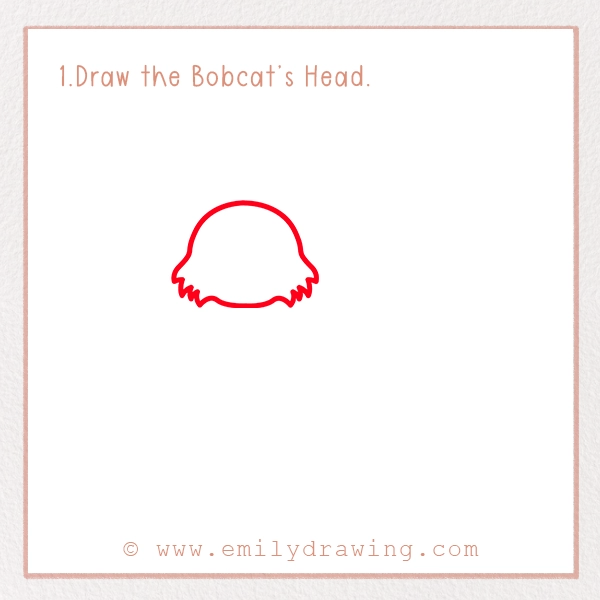
Start by drawing a rounded shape for the head. It should be slightly wider at the top and narrower at the bottom, creating a natural feline look. To make the bobcat’s head appear fluffy, add small tufts of fur at the bottom. Take your time to ensure symmetry, as the head will be the focal point of your drawing.
Step 2 – Add the Bobcat’s Chin Fur
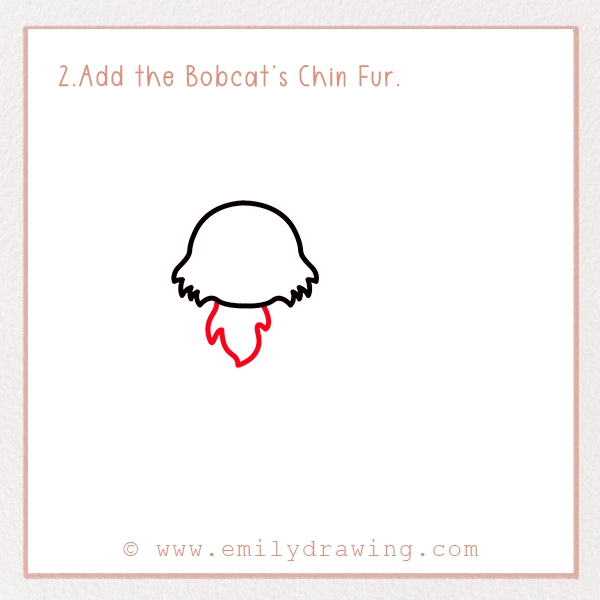
Now, extend a few jagged lines downward from the head to form the characteristic chin fur of a bobcat. This fluffy addition gives your bobcat a wild and rugged appearance, setting it apart from a domestic cat. Adding extra fluff helps emphasize its wild nature!
Step 3 – Sketch the Front Legs and Body Outline
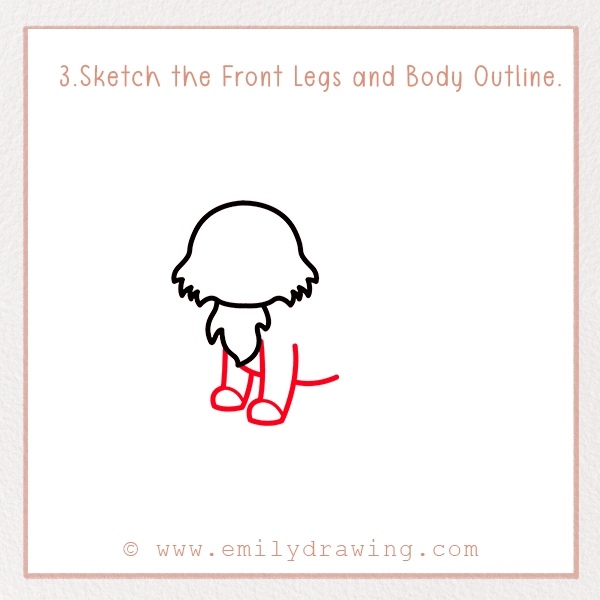
From the bottom of the head, draw two straight lines downward to form the front legs. Add small rounded paws at the base. Then, draw a slightly curved line from the back of the head to outline the bobcat’s body. Keep in mind that bobcats have strong, muscular builds, so ensure your lines reflect a sturdy stance.
Step 4 – Draw the Hind Legs
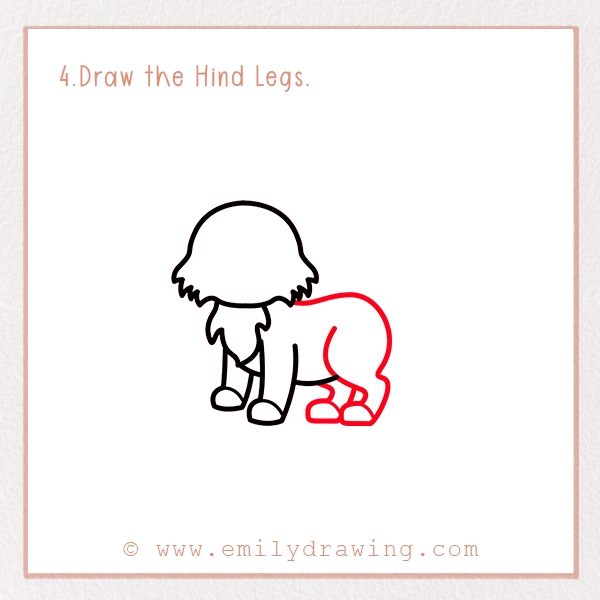
Next, add the hind legs by drawing rounded shapes at the back of the body. Make them slightly thicker than the front legs, as bobcats use their powerful hind legs for jumping and running. Don’t forget to add little curved toes to give them a more lifelike appearance!
Step 5 – Add a Short, Fluffy Tail
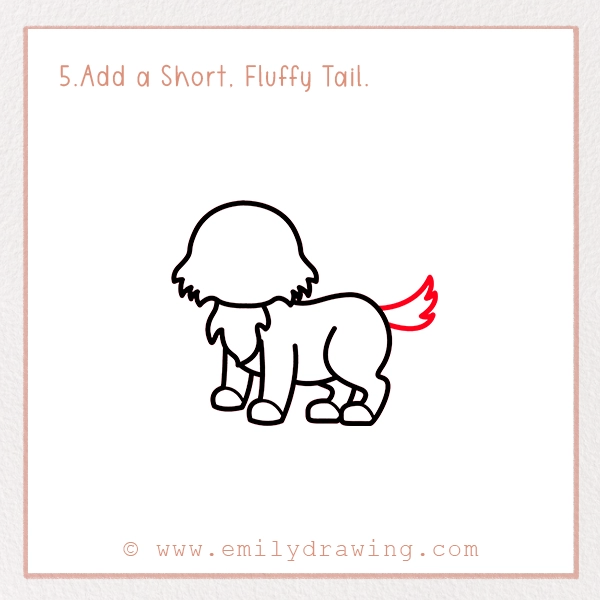
Bobcats are named for their short, “bobbed” tails! Draw a small curved tail at the rear, making it fluffy with a few jagged lines. Unlike many big cats, bobcats do not have long tails, so keep it short and slightly curved upwards.
Step 6 – Add the Ears
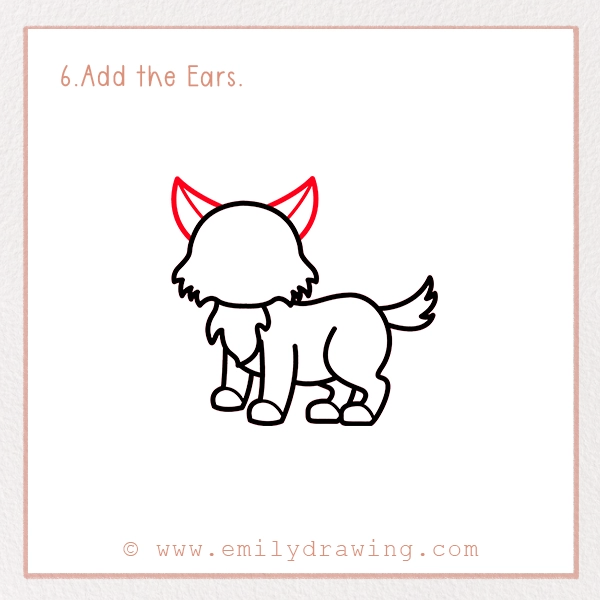
Now, it’s time to add the bobcat’s most distinctive feature: its tall, tufted ears. Draw two slightly pointed, triangular ears on top of the head, making them stand upright. Inside each ear, add small tufts of fur, as bobcats have distinctive black ear tufts that enhance their hearing abilities.
Step 7 – Add Spots and Fur Details
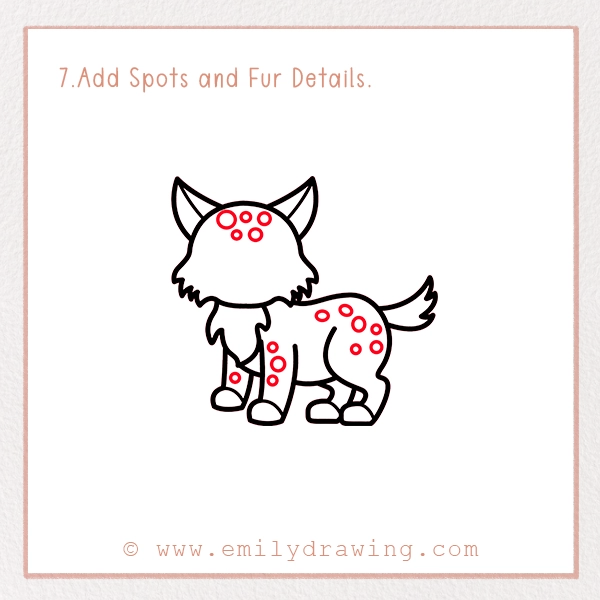
Bobcats have beautiful, spotted fur that helps them blend into their surroundings. Using light, curved lines, add some small circular spots across the body and legs. This step will give your drawing a more authentic and detailed look.
Step 8 – Draw the Face
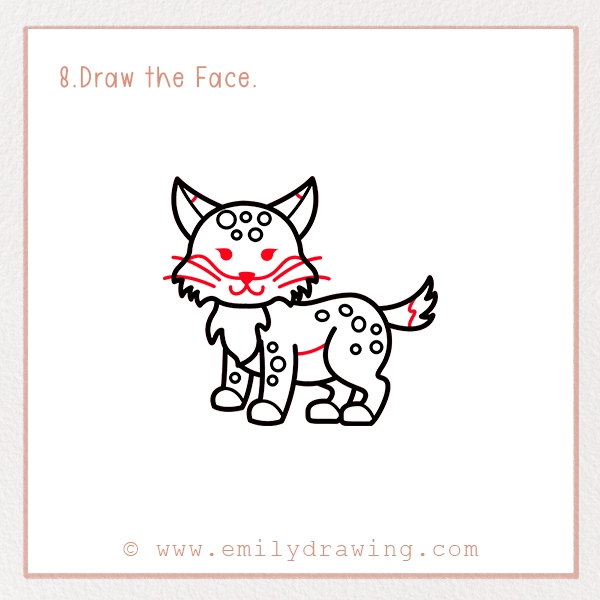
Now, bring your bobcat to life by drawing its face! Start with two bright, round eyes, making sure to leave a small white highlight in each eye for a realistic shine. Then, add a small triangular nose in the center of the face and a curved mouth below it. Finally, draw a few long whiskers on either side of the face.
Step 9 – Color Your Drawing!

Now that you’ve completed your drawing, it’s time to bring it to life with color! Bobcats have coats that range from light tan to reddish-brown, with dark spots and stripes. Use shades of brown, tan, and black to make your bobcat look realistic. Add some white around the cheeks and belly for contrast. You can also experiment with fun, creative colors if you’d like to make your bobcat unique!
Pin it now, Draw later!
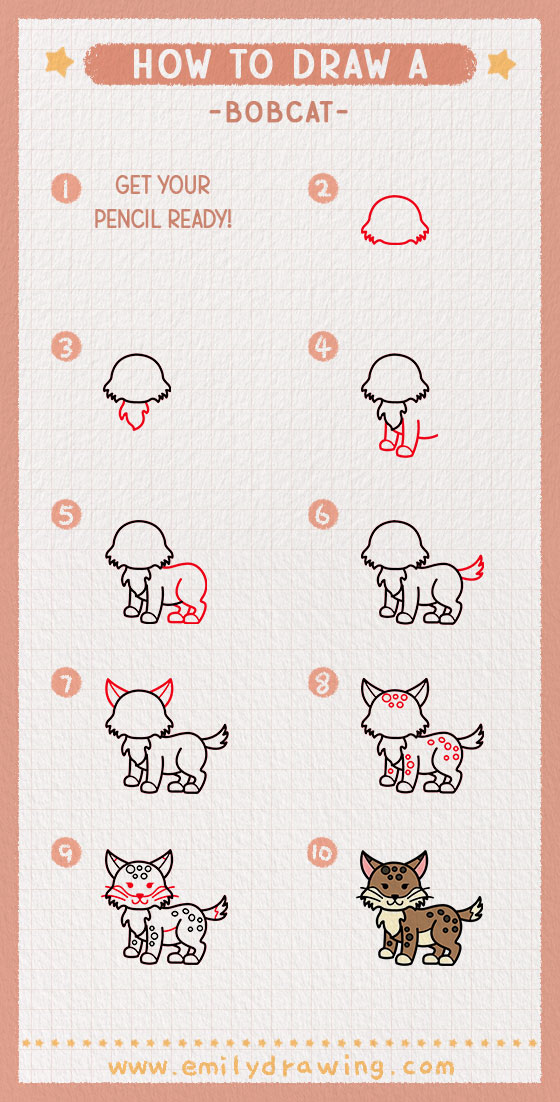
Fun Facts About Bobcats
- Bobcats are nocturnal, meaning they are most active at night!
- They are skilled hunters and can take down prey much larger than themselves, including deer.
- Bobcats communicate through growls, yowls, and even purring, just like domestic cats!
- These felines are extremely adaptable and can live in deserts, forests, swamps, and even suburban areas.
- Despite their small size compared to other wild cats, bobcats are incredibly strong and agile.
Tips and Tricks for Better Drawing
- Start with Light Pencil Strokes: Always sketch lightly at first so you can easily erase mistakes without damaging your paper.
- Use Reference Images: Looking at real bobcat photos can help you understand their shape, proportions, and fur patterns better.
- Add Shading for Depth: To make your drawing look more three-dimensional, try shading areas like under the ears, along the legs, and around the eyes.
- Make the Fur Look Natural: Use short, quick pencil strokes to add texture and make the fur appear soft and realistic.
- Experiment with Different Expressions: Try making your bobcat look fierce, playful, or curious by changing the shape of its eyes and mouth.
The History of Bobcats in Art
Bobcats have long been a source of inspiration for artists and storytellers. Ancient Native American tribes often depicted bobcats in their cave paintings and folklore. They were seen as symbols of strength, patience, and cunning. Even today, bobcats appear in modern illustrations, books, and cartoons, making them a beloved subject for artists of all ages.
Why Learning to Draw Animals is Beneficial
Drawing animals like bobcats not only improves your artistic skills but also teaches you patience and observation. By studying the anatomy and movement of animals, you become more aware of nature’s beauty. Plus, drawing is a fantastic way to relax and express creativity!
Conclusion and Call to Action
Congratulations! You’ve just completed your very own bobcat drawing. We hope you had fun following this step-by-step guide and learning about these incredible wild cats. Don’t forget to show off your artwork to your family and friends! You can even share it on social media using #EmilyDrawing to inspire others to draw their own bobcats.
If you enjoyed this tutorial, why not try drawing more wild animals? Challenge yourself with a tiger, lion, or even a cute fox! Keep practicing, and remember every artist improves with time and effort.
Happy drawing!


